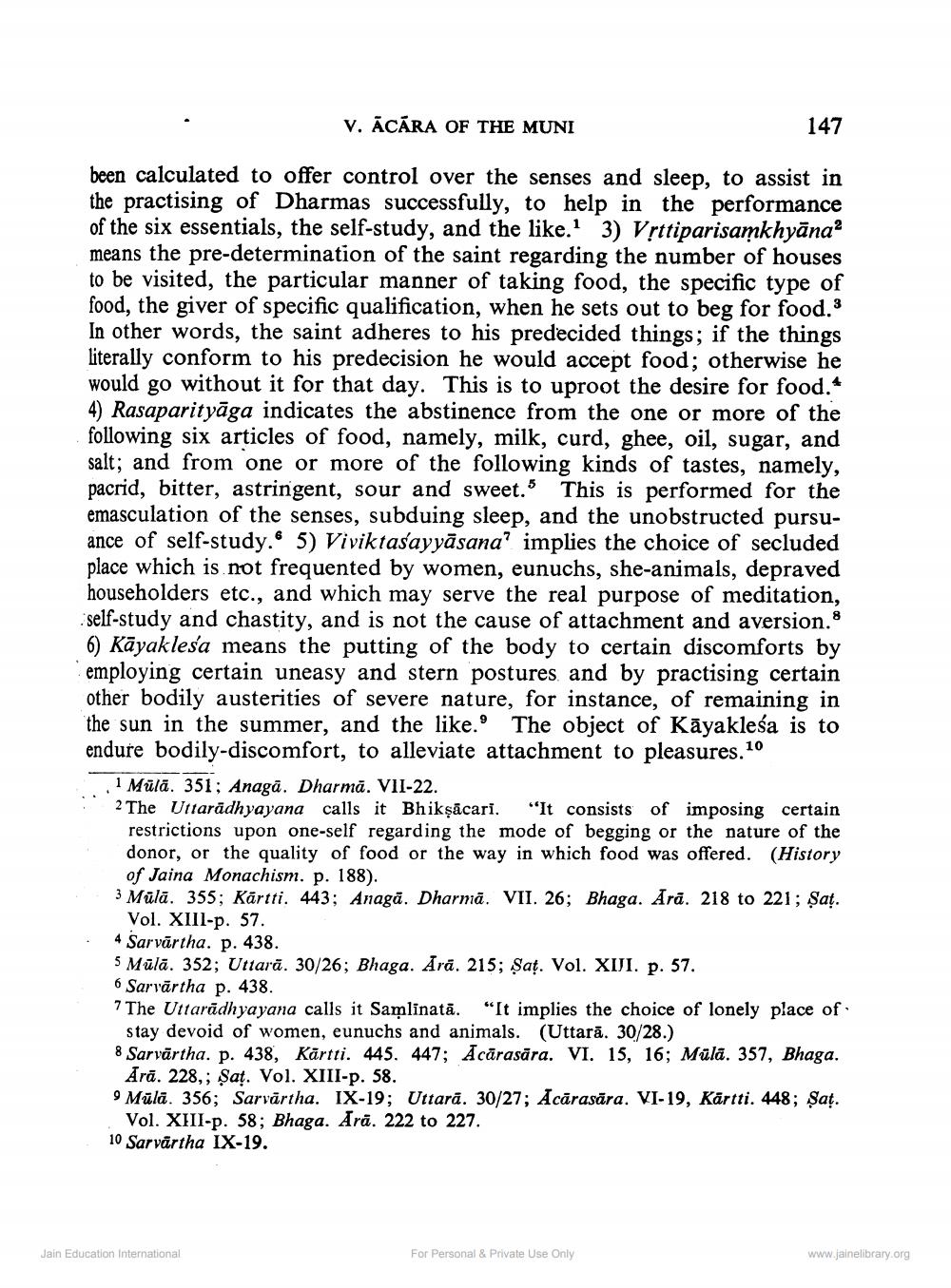________________
V. ĀCĀRA OF THE MUNI
147
been calculated to offer control over the senses and sleep, to assist in the practising of Dharmas successfully, to help in the performance of the six essentials, the self-study, and the like. 3) Vrttiparisamkhyāna means the pre-determination of the saint regarding the number of houses to be visited, the particular manner of taking food, the specific type of food, the giver of specific qualification, when he sets out to beg for food. In other words, the saint adheres to his predecided things; if the things literally conform to his predecision he would accept food; otherwise he would go without it for that day. This is to uproot the desire for food. 4) Rasaparityāga indicates the abstinence from the one or more of the following six articles of food, namely, milk, curd, ghee, oil, sugar, and salt; and from one or more of the following kinds of tastes, namely, pacrid, bitter, astringent, sour and sweet. This is performed for the emasculation of the senses, subduing sleep, and the unobstructed pursuance of self-study. 5) Viviktasayyāsana? implies the choice of secluded place which is not frequented by women, eunuchs, she-animals, depraved householders etc., and which may serve the real purpose of meditation, self-study and chastity, and is not the cause of attachment and aversion. 6) Kāyaklesa means the putting of the body to certain discomforts by employing certain uneasy and stern postures and by practising certain other bodily austerities of severe nature, for instance, of remaining in the sun in the summer, and the like. The object of Kāyakleśa is to endure bodily-discomfort, to alleviate attachment to pleasures. 10 . 1 Mülā. 351; Anagā. Dharmă. VII-22. 2 The Uttarādhyayana calls it Bhikṣācari. "It consists of imposing certain
restrictions upon one-self regarding the mode of begging or the nature of the donor, or the quality of food or the way in which food was offered. (History of Jaina Monachism. p. 188). 3 Mülā. 355; Kārtti. 443; Anagā. Dharmā. VII. 26; Bhaga. Arā. 218 to 221; Şat.
Vol. XIIl-p. 57. 4 Sarvārtha. p. 438. 5 Mülā. 352; Uttarā. 30/26; Bhaga. Ara. 215; Sat. Vol. XIJI. p. 57. 6 Sarvārtha p. 438. 7 The Uttarādhyayana calls it Samlinatā. “It implies the choice of lonely place of
stay devoid of women, eunuchs and animals. (Uttarā. 30/28.) 8 Sarvārtha. p. 438, Kārtti. 445. 447; Ācārasāra. VI. 15, 16; Müla. 357, Bhaga.
Ārā. 228,; Şat. Vol. XIII-p. 58. 9 Mülā. 356; Sarvārtha. IX-19; Uttara. 30/27; Acārasāra. VI-19, Kärtti. 448; $aț.
Vol. XIII-p. 58; Bhaga. Arā. 222 to 227. 10 Sarvârtha IX-19.
Jain Education International
For Personal & Private Use Only
www.jainelibrary.org




